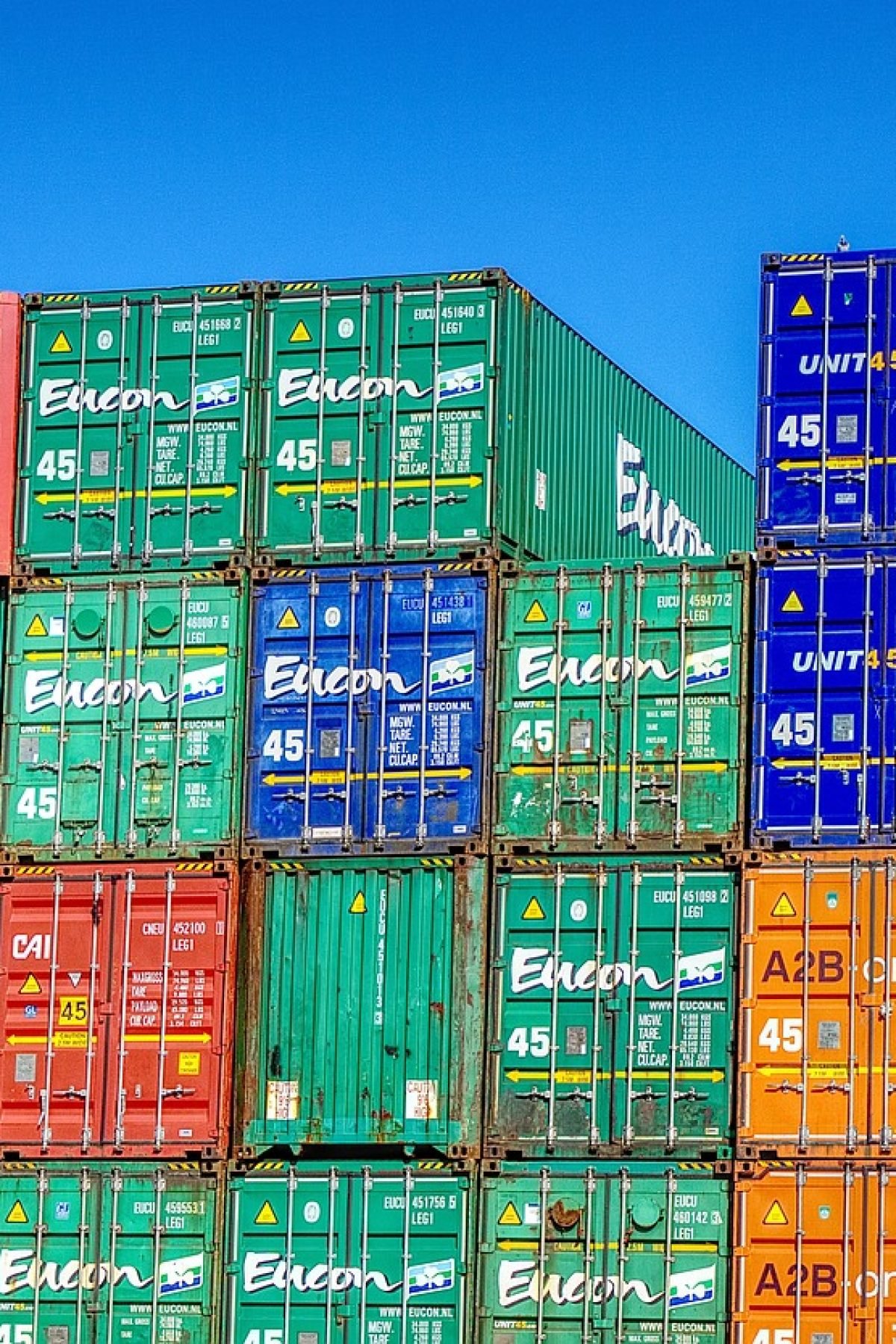Get the week's most popular posts delivered to your inbox.
Our weekly update is free yet priceless and you're less than a minute away from getting the current edition.
In the unlikely event we disappoint, you can unsubscribe with a single click!
Last Updated on October 30, 2025 by teamobn
Shipping containers have proven to be an excellent resource for storage of a whole range of things. Immensely strong, these steel structures offer volumes up to 2,750 sq. ft. of usable space! But, when using a shipping container for long-term storage, keeping your belongings safe and organized becomes an essential consideration.
Whether you’re storing building materials until you are ready to use them, or household items and furniture while you complete your home, business inventory and records, or other personal valuables, a well-thought-out plan ensures that your container is optimized for both space and security.
With the right approach, shipping container storage can be a highly effective space and cost solution for safeguarding your belongings. This guide covers essential tips for securing and organizing your container for long-term storage.
Contents
1. Choose the Right Container
The first step in ensuring your container is ready for long-term storage is selecting the right one. Shipping containers come in various sizes, typically 20 feet or 40 feet in length, with options for high-cube models that offer extra vertical space. When choosing your container:
- Inspect the Container: Make sure there are no visible signs of rust, dents, or damage. The container should be structurally sound to withstand weather elements for extended periods.
- Check for Water-Tightness: A water-tight container ensures that moisture doesn’t enter and damage your belongings. Test by closing the container and inspecting for any light leaks, which may indicate holes or gaps.
- Consider Ventilation: For long-term storage, adequate ventilation helps prevent moisture build-up and the growth of mold or mildew. Look for containers with built-in vents or install additional ones if necessary.
Before you commit to buying a unit, it’s worth weighing the benefits of renting vs. building storage to match your timeline, budget, and security needs. Renting a shipping container can deliver immediate, flexible capacity without permits or upfront construction costs, while still letting you apply the same selection criteria — watertight seals, ventilation, and structural integrity — outlined above.
For a quick decision framework, see the benefits of renting vs. building storage, then choose the container option that best aligns with how long you’ll store items and how often you’ll need access.
2. Secure the Container Properly
Once you’ve chosen the right shipping container, security becomes your top priority. The contents may sit for months or even years without anyone checking on them, so it’s vital to lock and secure the container effectively.
- Install a High-Quality Lock: Invest in a sturdy lock box and high-security padlock, such as a disc lock. These locks are more resistant to tampering and cutting compared to standard padlocks.
- Reinforce the Doors: Shipping container doors can sometimes become a point of vulnerability. Reinforcing the door frames and seals with additional steel or custom modifications can deter break-ins.
- Consider Surveillance Systems: If you’re storing the container in a location where theft or vandalism is a concern, install a camera or motion sensor lights. These systems can deter potential threats and provide peace of mind.
3. Prepare and Protect Your Items
One of the key challenges with shipping container storage is ensuring that your items remain in pristine condition over time. To prevent damage, you’ll need to take precautions with your items before placing them inside.
- Use Plastic Containers: Opt for clear, airtight plastic containers for storing items rather than cardboard boxes, which can degrade over time and attract pests.
- Disassemble Large Items: If storing furniture or bulky items, disassemble them as much as possible. This reduces the risk of damage and makes the best use of space within the container.
- Use Pallets or Shelving: Elevate items off the container floor using timber or plastic pallets or install shelving. This will prevent water damage in case of condensation build-up or flooding and create more efficient storage.
- Wrap Fragile Items Carefully: Use bubble wrap or furniture blankets to protect fragile items like glassware, electronics, or artwork. For larger pieces, consider shrink-wrapping them for extra security.
4. Organize for Accessibility

If you need access to your belongings during storage, it’s essential to keep everything organized and accessable. With proper planning, you can ensure easy access to frequently needed items without having to unload the entire container.
- Create a Storage Map: A simple sketch showing the general location of items inside the container can save you time and effort when retrieving things. Label each box or container clearly and keep an inventory list handy.
- Store Heavy Items at the Bottom: Place heavier, bulkier items like appliances, machinery, or tools at the bottom, ensuring they are stable. This not only protects lighter items but also maintains balance in the container.
- Keep Frequently Used Items Near the Door: Items you may need to access occasionally should be stored near the container’s entrance, while rarely needed items should be placed toward the back.
- Maximize Vertical Space: Use shelving systems to make the most of the container’s height. Stack lighter items on top of heavier ones and leave aisles for easy navigation within the container.
5. Protect Against Moisture and Pests
Over long periods, moisture and pests can become a major issue in shipping container storage. Condensation, humidity, and unwanted visitors like rodents or insects can cause damage if preventive measures aren’t taken.
- Use Desiccants or Dehumidifiers: Placing desiccant packs or a small dehumidifier inside the container can absorb excess moisture, preventing mold and mildew growth. These are especially useful if you’re storing items in a humid climate.
- Seal Gaps and Openings: Check for any openings, cracks, or gaps that pests could use to enter the container. Seal these with weatherproof caulking or foam insulation to prevent infestations.
- Lay Down Pest Repellents: Consider using pest repellents, such as mothballs or cedar blocks, to deter insects or rodents from entering and nesting in your belongings.
6. Regularly Check and Maintain the Container
While you may not plan on visiting your container frequently, periodic checks ensure that everything remains in good condition.
- Inspect the Roof and Exterior: Over time, the roof and walls of your shipping container may deteriorate due to weather exposure. Look for signs of rust or leaks and address any issues immediately.
- Ventilate During Hot Weather: In warmer months, excessive heat inside the container can cause damage to sensitive items like electronics. If possible, ventilate the container by opening it occasionally or installing a small solar fan.
- Clean the Interior and Exterior: Regular cleaning can help prevent dust, dirt, or grime from building up on your items. Sweep the floors and wipe down surfaces to maintain a clean environment inside.
Final Thoughts
Using a shipping container for long-term storage is an efficient and cost-effective solution, but careful preparation is key to success. By selecting the right container, organizing your items properly, and ensuring maximum security and protection against the elements, you can feel confident that your belongings will stay safe for years to come. Follow the steps outlined above, and your shipping container storage experience will be hassle-free and efficient.
And if you’re looking for more than storage, have you every considered using containers to build a truly unique container home?
Get the week's most popular posts delivered to your inbox.
Our weekly update is free yet priceless and you're less than a minute away from getting the current edition.
In the unlikely event we disappoint, you can unsubscribe with a single click!






